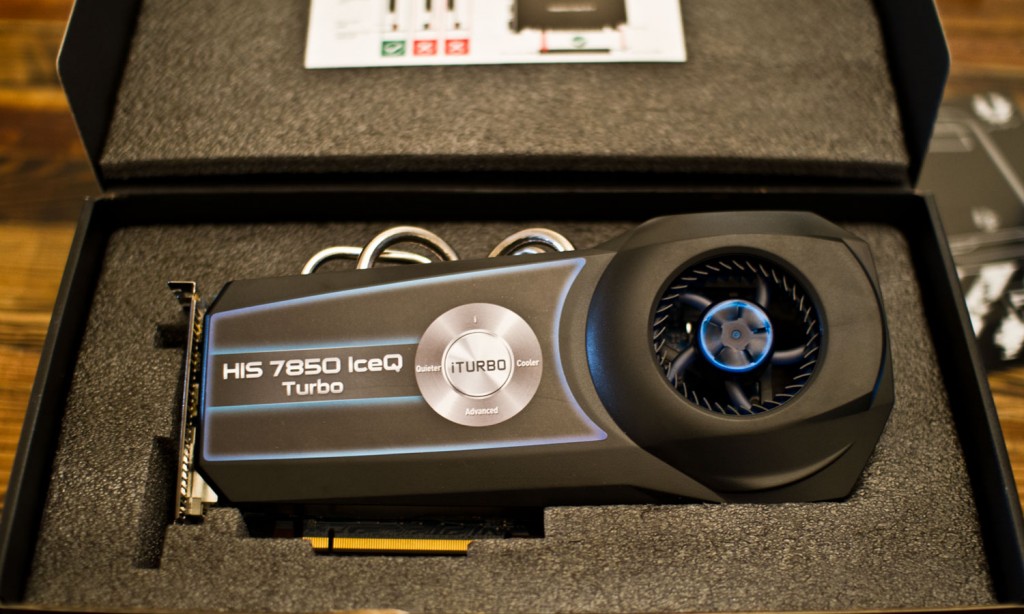Before we start I wanted to note that all of the pictures in this article are linked to higher resolution versions.
Let’s Begin
As some of you may know, a few weeks ago I set out on a journey. My journey wasn’t very different from that of Frodo and Samwise when they set out from the Shire to take The One Ring to Mordor, and cast it into the fires of Mount Doom. But, instead of Sam I had Jeff, and instead of throwing a ring into some lava, I was researching, pricing out and building new gaming PCs. This marks the first new PC I’ve built for myself since 2007 when I put together what we lovingly refer to as the “Leet World PC.” The itch to build a new machine began when Steam released Big Picture Mode, and I started to really love the idea of having a 10-foot experience for my PC games.
The goals I had for this build:
- Try to stay close to a $600 price point.
- Find a smaller, good looking-case and quiet components since it will be in the living room.
- Have playable frame rates in most games at 1080p with everything maxed.
Alright, on the important stuff…
Specs
| PART | DESCRIPTION | PRICE |
| CPU | Intel Core i3-3220 3.3GHz | $119.99 |
| Motherboard | ASRock B75M-ITX Mini ITX | $89.99 |
| Memory | G.Skill Ripjaws Series 8GB (2 x 4GB) DDR3-1600 | $40.98 |
| Storage | Seagate Barracuda 500GB 3.5″ 7200RPM | $59.99 |
| Video Card | HIS IceQ Turbo Radeon HD 7850 2GB | $189.99 |
| Case | BitFenix Prodigy Mini ITX Tower | $79.99 |
| Power Supply | Antec NEO ECO 620C | $49.99 |
| TOTAL | $630.92[1] |
Choices
Some of you might say, “Nick, you could’ve spent less money than that, and get basically the same performance if you had done ‘X’ thing.” And, you wouldn’t be wrong in that statement, but what you are forgetting is that I don’t care what you have to say. Yes, it’s true that if I would’ve gone with a different case (ATX/Mini ATX) I wouldn’t have been locked into paying more for a Mini ITX board, but the smooth lines and sexy curves of the BitFenix[2] case were too much to pass up. Another limiting factor with Mini ITX was the lack of AMD motherboards available, so I chose to go Intel.
Since the Prodigy case has two USB 3.0 ports on the side, I wanted to find a board that had USB 3.0 headers, and the ASRock B75M-ITX fit the bill. Not only that, but it has two more USB 3.0 ports and an eSATA port on the back, so you can connect all the things. After deciding on the board, I needed a CPU. Since this was meant to be just a gaming machine, I felt that I could skimp here, and didn’t go for the PC-builder’s darling, the Intel i5. Instead, I opted for the i5’s little brother, the i3-3220, and it’s a great little dual-core hyper-threaded chip that won’t bottleneck the GPU, which is the most important part. I originally was going to only get 4GB of RAM since most games can’t address more than that, but it was almost the same price to go for 8GB, so I thought I’d future-proof the box a little bit.
The crown jewel of this build is the GPU. Yes, it’s not the best graphics card ever, but for under $200, you can’t do much better. ATI’s Radeon HD 7850 is already a pretty fast card, but HIS has over-clocked their IceQ Turbo to 1.0GHz[3]. I also opted for 2GB of Video RAM, up from the standard 1GB, to help with anti-aliasing and texture detail at higher resolutions. Another nice thing about the HIS Ice Turbo is that it’s quiet… Really quiet. When I fired the machine up for the first time, I didn’t realize that it was on for a second. To go along with this beefy GPU, I picked up a 620 watt Antec PSU. Antec is one of the best names in power supplies, and this little guy delivers. It has more than enough connectors for HDD/GPU/fans, and is almost silent while running.
And now back to the good part…
Pictures
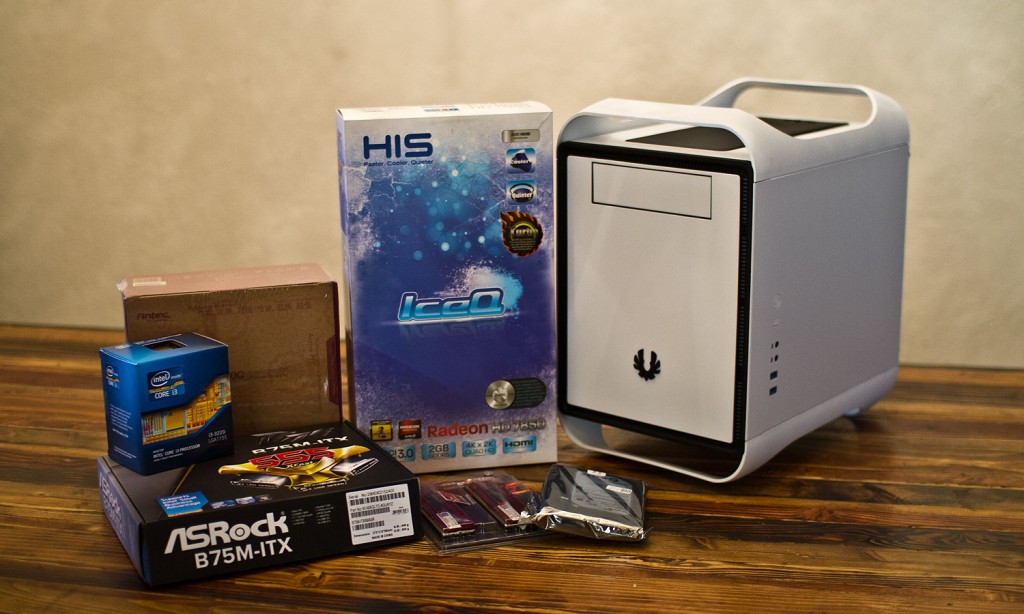
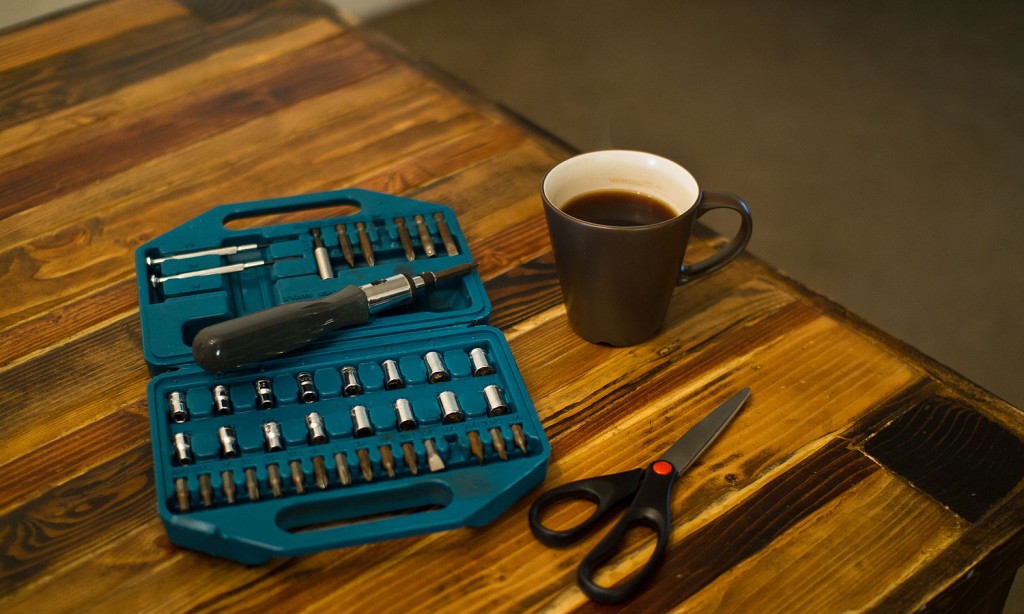
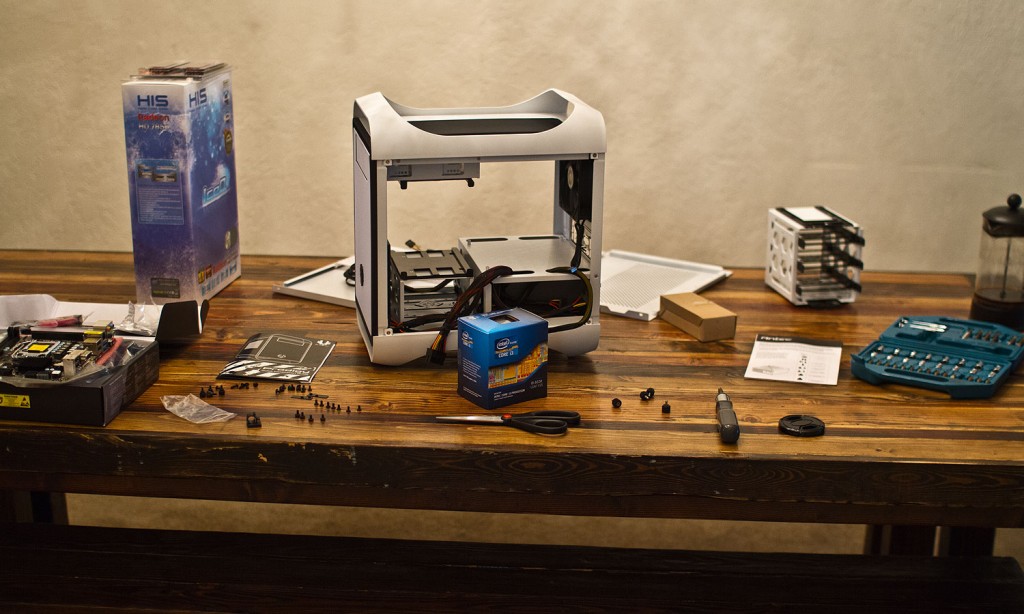
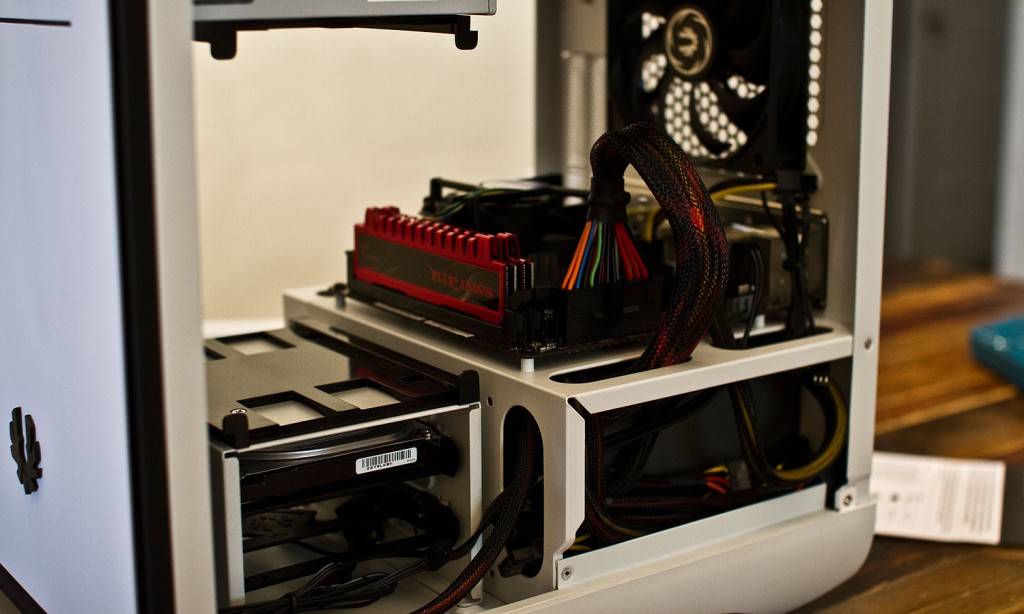
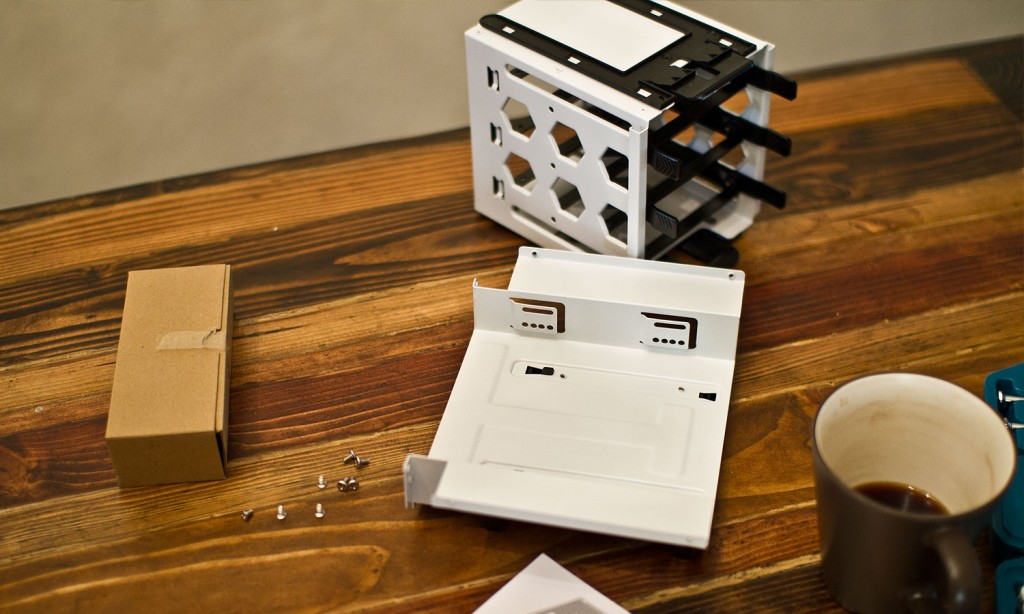
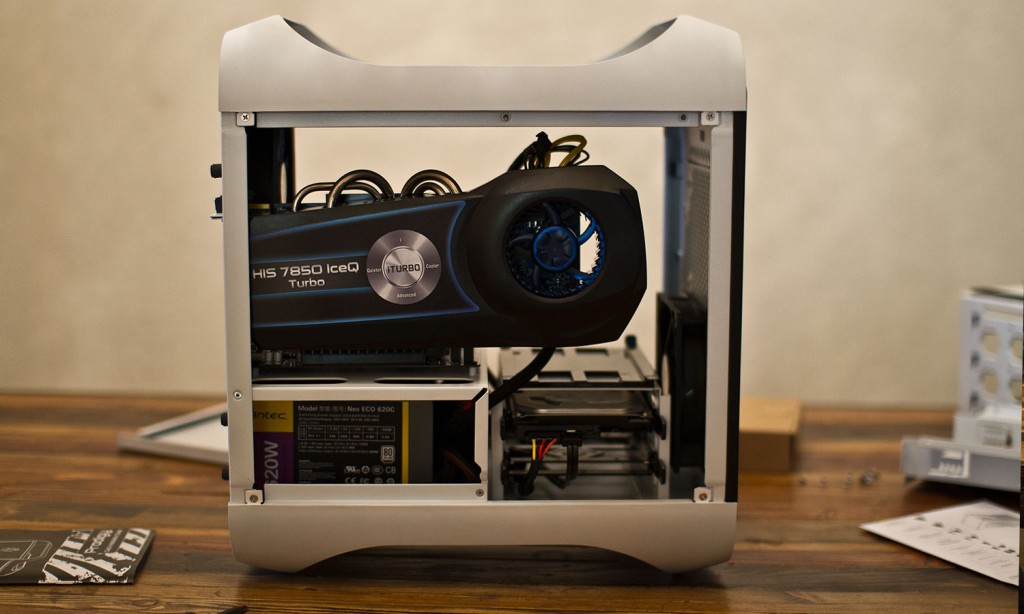

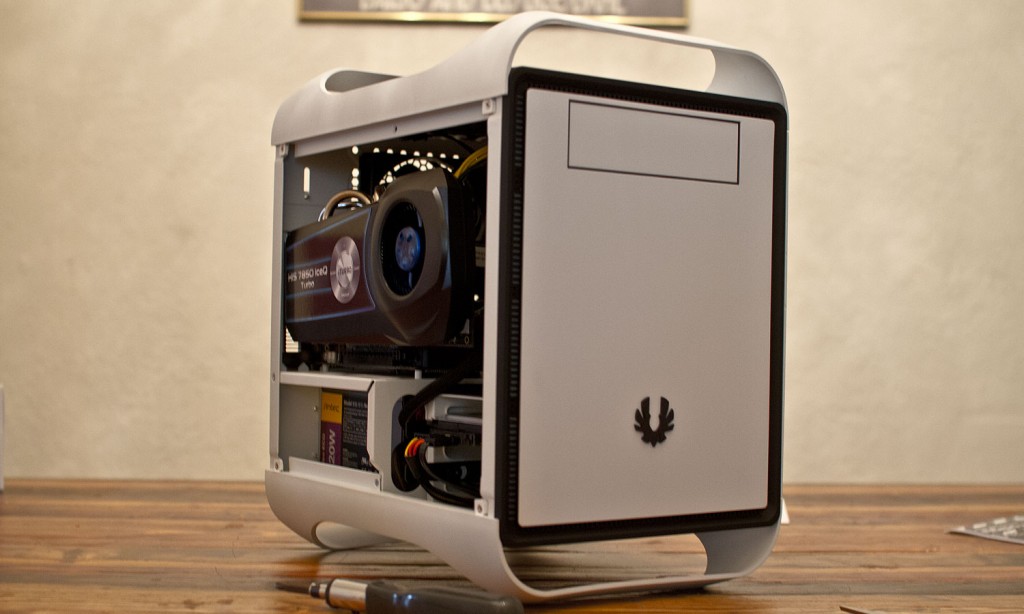
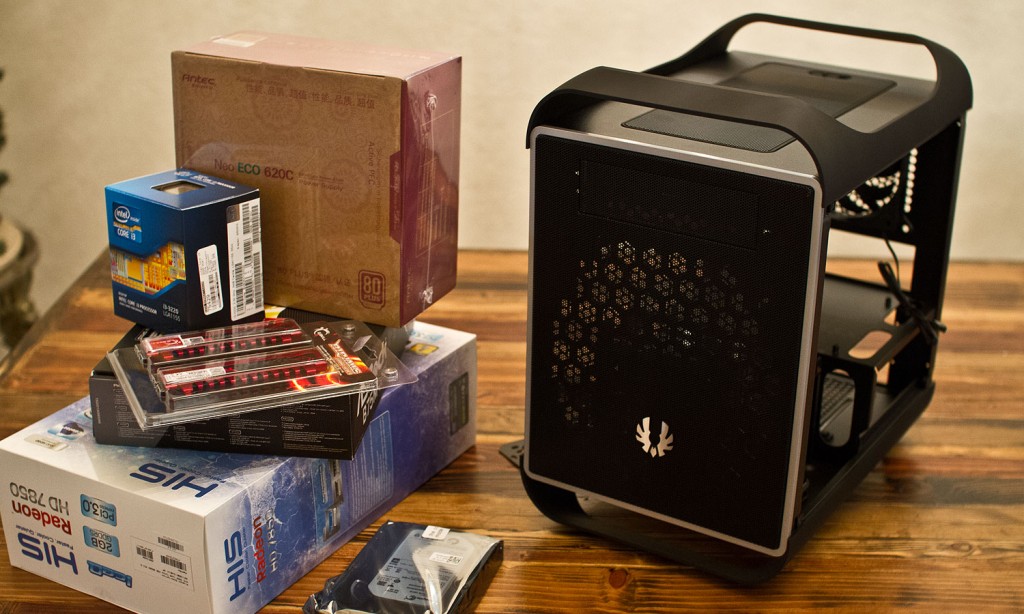
Obligatory benchmark
Alternates
If you are looking to build something similar, but maybe want to go a cheaper route, here are some options. First, you could build basically the same computer but with a cheaper case and motherboard. Also, if you are going to be running your games at 720p, something like a Radeon HD 7770 or NVIDIA’s GeForce GTX 650 would suit your needs fine. One interesting solution, if you like the case or the ITX form factor, is to go AMD. Yes, earlier I said there was a lack of AMD boards for Mini ITX, but the one or two that there are, are FM2 socket. The FM2 socket is for AMD’s Trinity, formerly Vision, APUs which are a combo CPU/GPU on the same chip. I know what you are saying, “But Nick, integrated graphics suck,” and you used to be correct. The Trinity APU is the first solution that is actually a viable integrated graphics solution for gaming. I’ve seen playable frame rates from games like Sleeping Dogs at 720p using an AMD A10-5800K. This would obviously save you a lot, because you won’t have to buy a separate GPU, and if you want, in the future you can Crossfire it with a matching ATI GPU for more performance.
To Wrap it Up
After the blood[4], sweat and tears I ended up with a pretty sweet little machine. She is quieter than the XBox 360 it sits next to, prettier than the PS3 on the other side, and more powerful than either. I loaded up a couple Steam games, and they look gorgeous at 1080p on the 50″ plasma. But, as happy as I am with the little black box, the dream of being able to just fire up your PC and start playing is not quite there yet. Consoles are still hands down more user-friendly. I had issues with Big Picture not auto loading, stability in games and not being able to dismiss alerts without a keyboard and mouse. Overall, I’m incredibly happy with the purchase, and wouldn’t change a thing, but this whole experience has really showed that unfortunately, Big Picture is not ready for prime time quite yet.




